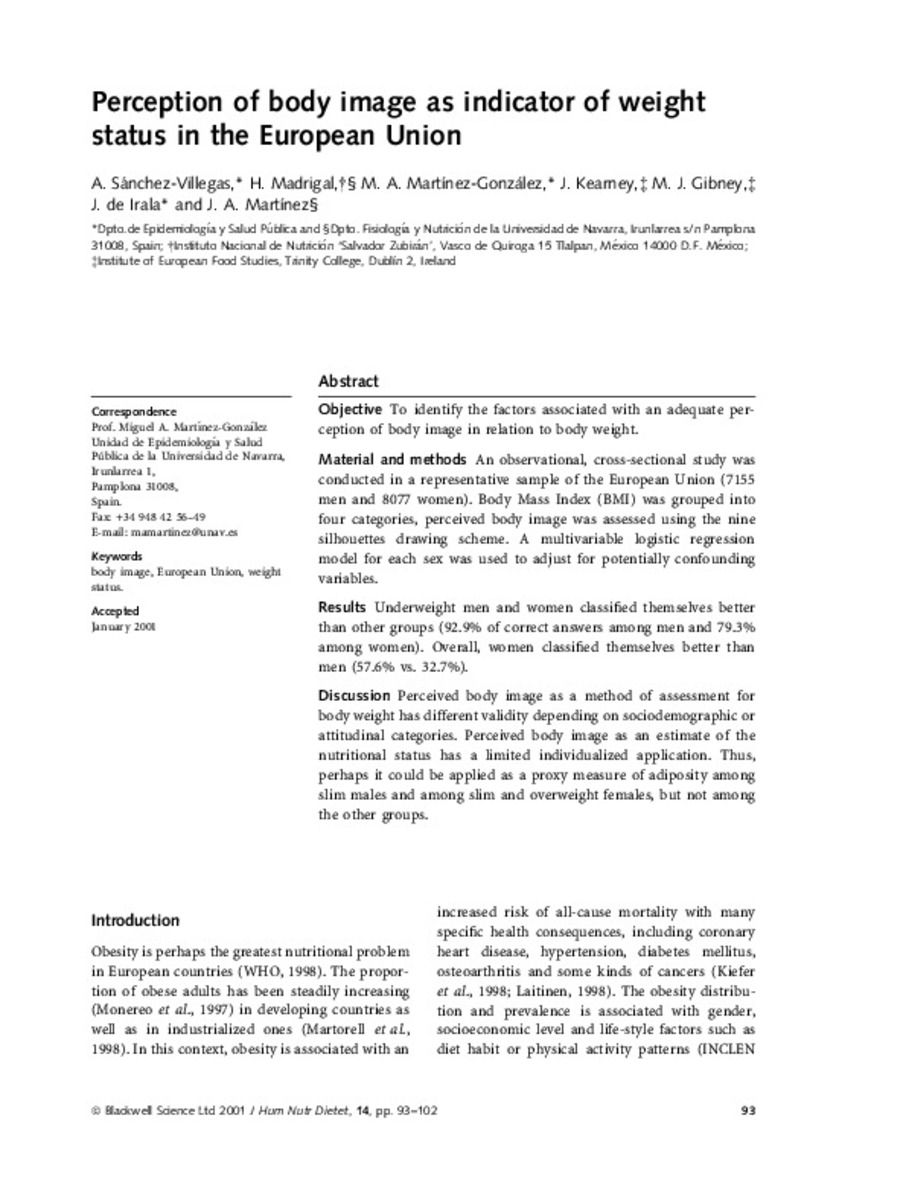Perception of body image as indicator of weight status in the European union
Palabras clave :
Body image
European Union
Weight status
Fecha de publicación :
2001
Editorial :
Wiley Blackwell
Cita:
Sanchez-Villegas A, Madrigal H, Martinez-Gonzalez MA, Kearney J, Gibney MJ, de Irala J, et al. Perception of body image as indicator of weight status in the European union. J Hum Nutr Diet 2001 Apr;14(2):93-102.
Aparece en las colecciones:
Estadísticas e impacto
0 citas en

0 citas en

Los ítems de Dadun están protegidos por copyright, con todos los derechos reservados, a menos que se indique lo contrario.








